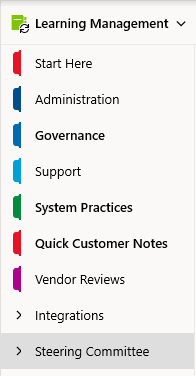Hi I am a new admin to manage eCampus. Our organization did not has a clear governance in the past. After a couple of years the number of superadmins, branches, Extended enterprises, groups, notifications, certificates, etc have all exploded. We use eCampus for internal employees/ B2B/ B2B2C and we expected the usage will keep growing.
We need to go back to the basic and have some kind of governance document in the place, then a big clean up.
Any one is facing similar challenge ? Any advise on the governance document ? Any advise on cleaning up? I am very new to this area so any experience/advise is really appreciated.
Thank you very much.










